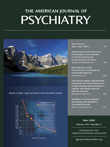Pathological Gambling: Etiology, Comorbidity, and Treatment
Although the field of systematic study of pathological gambling is relatively young, spanning a little more than two decades, Dr. Nancy Petry, herself quite young, has provided in this book a sophisticated and scholarly review on the etiology, comorbidity, and treatment of pathological gambling. Dr. Petry presents an exhaustive review of the empirical literature on problem gambling that will serve the novice, advanced student, and researcher well in documenting what is known about problem gambling and what is needed in future studies. The empirical data compiled is enriched by compelling and telling case examples throughout the text.
After describing the classification system [levels 0-3], prevalence, and types of gambling, Dr. Petry draws on the case examples to describe the dimensions and experience of pathological gambling and the often tragic consequence in a person’s life as he/she becomes progressively involved with the process. She starts with the more concealed and subtle manifestations, then “comments,” and then “continues” her case examples. As Petry indicates, there is a “dynamic” and progressive process with problem gambling, which her case reports amply reveal. In a number of instances the case examples are continued in subsequent chapters to demonstrate assessment and treatment issues. The reader also benefits by her clear definitions, including levels of gambling, and how such variables interact with life changes which in turn determine the level of severity of gambling behaviors. For instance, $20 per week for scratch tickets might be harmless, but in the context of job loss or a new baby it could become a hardship and the basis of marital conflict.
The author supplies a detailed citation and interesting reviews of the existing studies on prevalence rates of gambling patterns. When lifetime prevalence rates for problem gambling (level 2) are combined with lifetime prevalence rates of pathological gambling (level 3), the worldwide rate ranges between approximately 2%–6%, a little more than one in 20 individuals having a gambling problem at some time in their life (the past-year rates are in the range of 40%–60% of lifetime rates). Prevalence issues are made more interesting when rates in special populations are examined such as among substance abusers (significantly higher), the elderly (in some studies comparable to the general population and as tragic), and gaming patrons (not surprisingly, higher). Petry also examines rates of different types of gambling to determine if some are more addictive than others. Although inconclusive, she speculates how internet and electronic machines might be the most addictive and why this might be so. Dr. Petry provides data indicating that there have been modest but significant increases in prevalence of pathological gambling with the increase in legalized gambling in society.
As with other areas reviewed, a main strength of this book is that extensive empirical data on etiology and assessment scales are combined with clinical cases to demonstrate dimensions of disordered and pathological gambling. This combination makes the findings more compelling and teases those of us with a penchant to give meaning to and interpretations of human behavior, to ask why does being poor, uneducated, an ethnic minority, or unmarried make individuals more prone to pathological gambling? Could it be that elements of loneliness, poor self-esteem, depressive feelings, and diminished capacities for relationships are common to all these groups? In the chapter on comorbidity, beyond the indisputable and significantly higher frequency of lifetime rates of psychiatric disorders among pathological gamblers, the evidence and case examples make abundantly clear the pervasive distress and disruption when these conditions co-occur. Furthermore, treatment-seeking substance abusers with gambling problems evidence more severe employment, legal, psychiatric symptoms, and family difficulties than individuals without gambling problems. All the questions and issues raised with regard to etiology, comorbidity, physiologic, and genetic factors addressed in relation to substance use disorder are raised by Petry with regard to pathological gambling in this book, suggesting a significant crossover for substance use disorders with behavioral disorders, especially pathological gambling.
Chapters addressing research interventions covering pharmacotherapy, self-help, family therapy, cognitive-behavioral therapies and psychodynamic treatments provide a guide for the reader as to what is useful and effective, albeit Petry concedes many findings are preliminary in nature. Interestingly from my perspective, contemporary psychodynamic findings on affect, self-esteem, and relational deficits that have been stressed with addictions to substances [1, 2] apparently are not yet available with regard to pathological gambling. Dr. Petry spells out in more detail her own special area of interest in a cognitive-behavioral approach which shows considerable promise. In this respect she provides four appendices on material she uses in her approach.
There is much to recommend this book and little to criticize in my opinion. It will satisfy the empirically minded, the clinician, and the researcher alike in exploring the etiology, research on interventions, and treatment models for pathological gambling. I agree with the endorsers of the book that there is little or nothing that compares with this work on pathological gambling.
1. Khantzian EJ: The self-medication hypothesis of substance use disorders: a reconsideration and recent applications. Harvard Rev Psychiatry 1997; 4:231–244Google Scholar
2. Khantzian EJ: Self-regulation vulnerabilities in substance abusers: treatment implications, in The Psychology and Treatment of Addictive Behaviors. Edited by Dowling S. Madison, Conn., International Universities Press, 1995, pp 17-41Google Scholar



